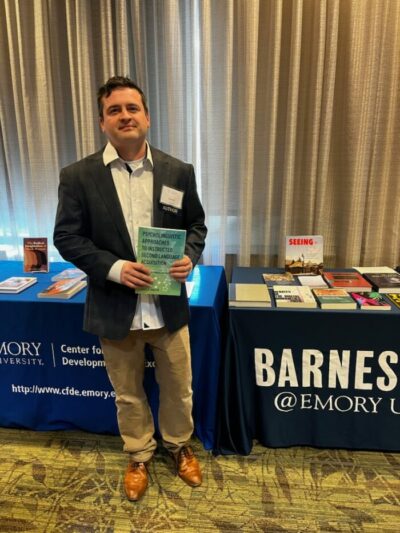Psycholinguistics of Second Language Acquisition

The effects of instruction on psycholinguistic representation and processing (i.e., how language is manifested in and learned by the brain (and body!)) may seem neatly defined, but the field in which this topic is contained, namely second language acquisition (SLA), is extremely interdisciplinary, with influences from psychology, linguistics, neuroscience, cognitive science, education, to only name a few. This makes for a diverse array of influences on one’s theoretical understanding, and therefore methodological approach, to research.
The endeavor to join classroom theory and praxis with research and findings from psycholinguistics led to a book with Multilingual Matters. The book, Psycholinguistics Approaches to Instructed Second Language Acquisition: Linking theory, findings, and practice, covers the wide spectrum of psycholinguistics, which is usually seen as two separate areas. On one side, researchers and educators engage with explicit instruction that uses the conscious mind of the language learner to instruct various aspects of vocabulary, grammar, and strategies for language learning. There are a number of other teaching techniques that fall under the auspices of other theoretical approaches to SLA, including sociocultural theory, that obviously involve psycholinguistic processes, which are not frequently discussed in the same vein of SLA research.
On the other side, researchers and educators focus on implicit learning and automated processes. While both fields of research are important for advancing knowledge about second language acquisition (SLA), there is little dialogue between people from these two camps. I propose that, for instructed SLA, these two fields are a related continuum of psycholinguistic processes that can be leveraged to increase the effectiveness of instruction.
Psycholinguistics Approaches to Instructed Second Language Acquisition also re-envisions the findings of psycholinguistic approaches to SLA in a meaningful way for instructed SLA. Included in this is a clear, concise picture of the complex and various mental faculties and mechanisms involved in the learning of a second language. This understanding is applied to both the individual learner and to the second language classroom. From here, the book provides practical suggestions for second language teachers and a way to understand the role of both conscious and unconscious processes throughout the course of learner development and thus across the entire curriculum.
In addition to the book, a number of other articles further explore issues of psycholinguisitcs, including computational perspectives (The impact of co-occurrence and context on the prediction of long-distance separable prefixes), sociocultural, concept-based approaches (Teaching German declension as meaning: A concept-based approach; The acquisition of German declension in additive and concept-based approaches in instructed SLA; Concept-based language instruction effects for second and heritage language learners: The case of Korean speech level), functional perspectives (Uncertainty is in the form: A functional, meaning-based approach to teaching ambiguity as author choice through Kafka’s Vor dem Gesetz), and the competition model (The effect of cue length and position on implicit learning and noticing of determiner-noun agreement pairings: Evidence from a cue-balanced artificial vocabulary learning task).